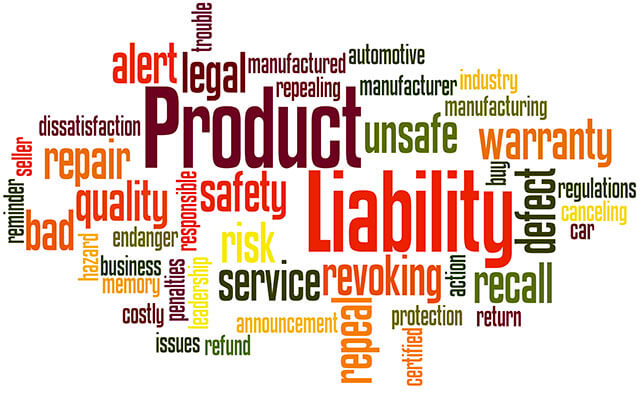
What is Product Liability?
Product liability is the area of law that deals with a company’s legal responsibility for producing, designing, or falsely advertising dangerous or defective products, including consumer goods.
United States law gives you, as a consumer, the right to seek monetary compensation from these companies for injuries and other damages you’ve suffered as the result of a defective product.
The laws regarding product liability are based on the idea that manufacturers have a legal duty to make certain that consumers are free from any unreasonable dangers associated with the products they design and produce, and that their products do not pose an easily-preventable or unnecessary risk of injury.
The Need for Product Liability Law
There are countless injuries and wrongful deaths that occur every year due to defective products. The products involved are widespread and include everything from children’s toys to electronics and even motor vehicles.
Product liability law places the legal burden on the manufacturer, giving consumers the right to hold the company responsible when their negligence leads to a personal injury or fatality. By bringing a product liability claim, you have the potential to save countless others from suffering a similar situation. Most product recalls are actually a direct result of a product liability claim.
Understand, though, that this area of law is quite complex. For this reason, it’s strongly advised that you discuss the facts of your case with a few product liability lawyers in your area who can give you their thoughts and opinions on the strength of your case.
If you find an attorney who feels that you have a viable claim, make sure they will take on your case under a contingency-fee agreement. This way you never risk a penny of your own money, and the attorney only get’s paid if they actually win your case.
Types of Product Defects
There are three types of “defects” that may ultimately cause injury to a consumer: design defects, manufacturing defects, and marketing defects.
Some items are defective by design, and not necessarily due to a manufacturing mistake. One clear example of this would be lawn darts. Even though the product has no physical defects, any reasonable person would agree that weighted spikes meant to be thrown in up the air by children poses an unnecessarily-dangerous risk of injury, and are thus defective by design.
While some may argue that those injured by a defectively-designed product are partially to blame for their injuries, these kind of cases operate under the theory of “strict liability.” This means that under the law, the manufacturer is legally responsible for 100% of the victim’s damages.
Marketing defects refer to the manner in which a company markets its products, including (but not necessarily limited to) things such as:
- Failure to properly label a product
- Lack of adequate safety warnings
- Failure to provide detailed and sufficient usage instructions
Assignment of Responsibility
For there to be a question of product liability, there must be a product that was available for sale in the marketplace. At one time, it was necessary for there to be some type of contractual relationship between the injured party and the supplier of the product in order for the injured party to expect to recover any type of damages. Currently, most states do not have a requirement for the injured party to be the original purchaser of the product as long as someone originally purchased it.
Liability for a product defect can be assigned to any party that falls into the product’s distribution chain, including any or all of the following:
- The manufacturer of the product
- The manufacturer of a product’s component parts
- A company or individual that assembles or installs the product
- A wholesaler
- A retail outlet where the consumer purchased the product
Sometimes it is impossible for a particular product to be manufactured or designed safer by the very nature of the product. With these types of products, it is the responsibility of users and consumers to minimize their risk factors. Even though one of these products may not be considerably unreasonably dangerous, both the manufacturers and supplier of these products are obligated to warn consumers of any potential risks and dangers so they are able to make informed decisions about the purchase and use of these products.
Do I Have a Potential Case?
If you’ve been injured by a defective or unsafe product, your first step should be to seek out a free consultation with an experienced product liability lawyer. Explain the facts of your case and why you believe the manufacturer is to blame, and ask questions!
Product liability law is complex, and to have any real chance at a successful claim or lawsuit, you need to have an attorney on your side. Luckily, these types of attorneys work on a no-win, no-fee basis.
For more information, or to speak with us about your potential case, call 1-877-659-2580.




